Today’s Current Affairs: 7th Sep 2023 for UPSC IAS exams, State PSC exams, SSC CGL, State SSC, RRB, Railways, Banking Exam & IBPS, etc
Table of Contents
Central Bank Digital Currency : RBI
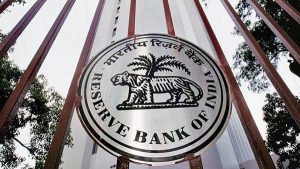
The Reserve Bank of India (RBI) Governor has highlighted the potential of Central Bank Digital Currency (CBDC) or E-rupee in improving cross-border payments’ efficiency.
- RBI is gradually expanding its CBDC pilots to include more banks, cities, diverse use cases, and a broader audience.
- The RBI launched pilots for digital rupee in the wholesale in November 2022 and in the retail segment in December 2022.
- CBDCs are a digital form of a paper currency and unlike cryptocurrencies that operate in a regulatory vacuum, these are legal tenders issued and backed by a central bank.
- It is the same as a fiat currency and is exchangeable one-to-one with the fiat currency.
- A fiat currency is a national currency that is not pegged to the price of a commodity such as gold or silver.
- The digital fiat currency or CBDC can be transacted using wallets backed by blockchain.
- Though the concept of CBDCs was directly inspired by Bitcoin, it is different from decentralised virtual currencies and crypto assets, which are not issued by the state and lack the ‘legal tender’ status.
- The main objective is to mitigate the risks and trim costs in handling physical currency, costs of phasing out soiled notes, transportation, insurance and logistics.
Armoured Recovery Vehicles:
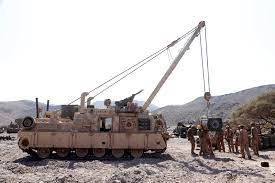
The Indian Army recently began the process to procure 170 Armoured Recovery Vehicles (ARVs) to enhance its operational capabilities.
- Armoured Recovery Vehicles are specialised military vehicles designed to recover and maintain armoured vehicles on the battlefield.
- These vehicles are crucial for keeping armoured units operational by recovering damaged or disabled tanks and other armoured vehicles, performing field repairs, and evacuating casualties.
- They are normally built on the chassis of a main battle tank (MBT), but some are also constructed on the basis of other armoured fighting vehicles, mostly armoured personnel carriers (APCs).
What Is The Impossible Trinity?

The Reserve Bank of India(RBI) and Indian investors are facing a challenge in overcoming the “impossible trinity”.
- The impossible trinity, or the trilemma, refers to the idea that an economy cannot pursue independent monetary policy, maintain a fixed exchange rate, and allow the free flow of capital across its borders all at the same time.
- In a fixed exchange rate regime, the domestic currency is tied to another foreign currency such as the U.S. dollar, Euro, the Pound Sterling or a basket of currencies.
- An able policymaker can, at best, achieve two of these three objectives at any given time.
- The idea was proposed independently by Canadian economist Robert Mundell and British economist Marcus Fleming in the early 1960s.
- The Impossible Trinity is a fundamental concept in international economics and monetary policy.
- It describes the inherent challenges countries face when trying to simultaneously achieve three specific policy objectives related to their exchange rate and capital flows.
Project Naman : Indian Army
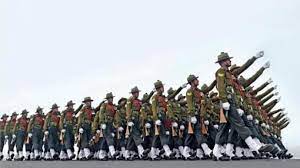
The Indian Army recently launched ‘Project Naman’, which will entail establishing facilitation and grievance redressal centres for veterans and the kin of personnel who have lost their lives.
- Project Naman will entail establishing facilitation and grievance redressal centres for veterans and the kin of personnel who have lost their lives.
- The first such centre will be established in Delhi Cantonment.
- ‘Naman’ will house a Common Service Centre, which will facilitate the veterans and their relatives.
- It will offer all government-to-customer services and also facilitate the updating of pensioners’ accounts on the SPARSH portal of veterans, next of kin and dependents.
- SPARSH portal is being implemented by the Ministry of Defence to meet the pension sanction and disbursement requirements for Armed Forces viz. Army, Navy, Air Force and Defence Civilians.
- The Defence Pensioner will be given a completely transparent view of his pension account through this portal, which will capture and maintain a complete history of events and entitlements the pensioner right from the date of commencement of pension to the date of cessation of pension due to his/her last eligible beneficiary.
- This system will be administered by the Defence Accounts Department through the Principal Controller of Defence Accounts (Pensions).
Lunar Reconnaissance Orbiter : NASA
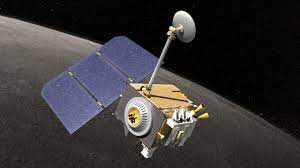
NASA’s Lunar Reconnaissance Orbiter (LRO) recently captured the image of India’s Chandrayaan-3 lander.
- Lunar Reconnaissance Orbiter (LRO) is a NASA spacecraft that was launched on June 18, 2009.
- Primary Objective is to make a 3D map of the Moon’s surface from lunar polar orbit.
- It has also been used to study the Moon’s geology, mineralogy, and environment.
- It orbits the Moon in an eccentric polar mapping orbit.
- LRO is equipped with 7 science instruments, the most well-known of which is a 195-millimeter (7.7-inch) telescope and camera system that can see details up to 2.5 meters across.
- LRO is equipped with a laser altimeter that produces 3D maps by shooting lasers at the surface and measuring reflection times.
- The spacecraft also carries two instruments suited to peering into dark craters to search for signs of water ice and a temperature instrument that led to the discovery of the coldest place in the solar system.
Caribbean False Mussel : Report
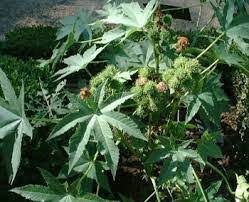
A recent report from the Intergovernmental Platform on Biodiversity and Ecosystem Services (IPBES) said that the spread of an invasive species, the Caribbean false mussel (Mytilopsis sallei), is wiping out the native clams and oysters in Kerala.
- Caribbean false mussel is originally from the Atlantic and Pacific coasts of South and Central America.
- It could have reached the Indian coast through ballast waters i.e the seawater that ships carry inside for better stability and later spread to the estuaries through smaller fishing vessels.
- This invasive species has spread across estuaries from Thiruvananthapuram to Kasaragod.
- It has also started affecting the mussel aquaculture farms in Kerala.
- It reproduces rapidly, is very tolerant, and can even survive in freshwater.
- They grow in similar habitats where our mussels grow and displace them massively.
- It can be found growing on hard surfaces such as logs, stones, shells, and artificial structures.
IPBES:
- It is an independent intergovernmental body.
- It was established in Panama City in April 2012 by 94 Governments.
- It aims to strengthen the science-policy interface for biodiversity and ecosystem services for the conservation and sustainable use of biodiversity, long-term human well-being and sustainable development.
- It is not a United Nations body. However, the United Nations Environment Programme (UNEP) provides secretariat services to IPBES.
- Headquarter – Bonn, Germany
Comet Nishimura:

NASA said that it seems like a good bet that Comet Nishimura could become visible to the naked eye this week
- Comet Nishimura was discovered in mid-August by amateur astronaut Hideo Nishimura, who used 30-second exposures with a standard digital camera to see it.
- Since then, the comet, officially called C/2023 P1 Nishimura, has increased in brightness as it went forward on its path in the inner solar system.
- The comet is angularly near the Sun, so even if it is visible, it will only be able to spot it early before sunrise or late before sunset.
- The comet is currently located in the constellation Leo.
- It completes an orbit around the Sun once every 435 years.
- Comets are cosmic snowballs of frozen gases, rock and dust that orbit the Sun.
- They are leftovers from the formation of the solar system.
- Typically, they range from a few kilometres to tens of kilometres wide. But as they orbit closer to the Sun, they spew out gases and dust, which form the tails that they are famous for.
One-Hour Trade Settlement : SEBI
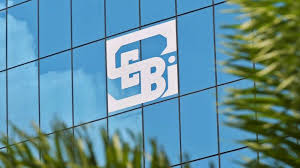
Securities and Exchange Board of India (SEBI), which had in July announced it was working on launching real-time settlement of trades, is now planning to implement one-hour settlement of trades first.
- In one-hour settlement, if an investor sells a share, the money will be credited to their account in an hour, and the buyer will get the shares in their demat account within an hour.
- Settlement is a two-way process that involves the transfer of funds and securities on the settlement date.
- A trade settlement is said to be complete once purchased securities of a listed company are delivered to the buyer and the seller gets the money.
- The current cycle of T+1 means trade-related settlements happen within a day or 24 hours of the actual transactions.
- The migration to the T+1 cycle came into effect in January 2023.
- India became the second country in the world to start the T+1 settlement cycle in top-listed securities after China.
- A Demat Account or Dematerialised Account provides the facility of holding shares and securities in an electronic format.
- During online trading, shares are bought and held in a Demat Account, thus facilitating easy trade for the users.
- It holds all the investments an individual makes in shares, government securities, exchange-traded funds, bonds and mutual funds in one place.




